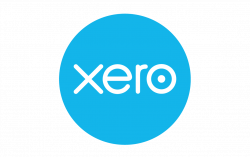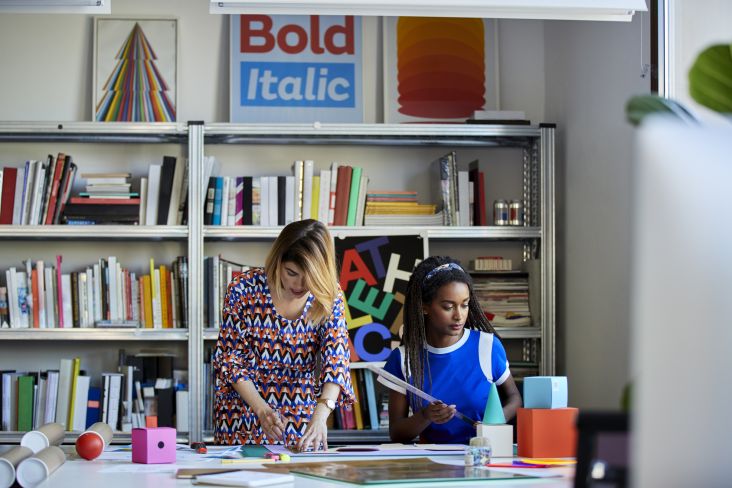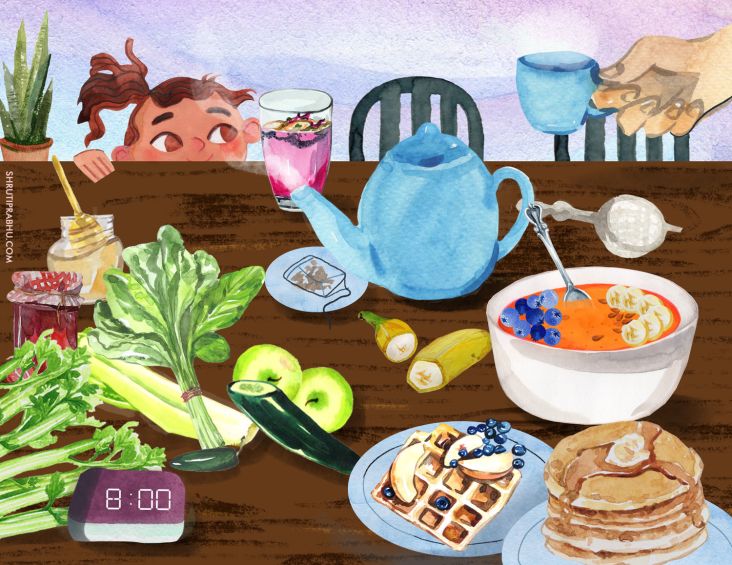How to become a freelancer in the UK, according to those who've done it
In normal times, there are many reasons to go freelance, including the freedom to set your own hours, choose the type of work you want to do, and potentially earn more money. In 2020, many of us have been forced into it through redundancy. Either way, freelancing is a great career path that offers numerous potential rewards.
 for Creative Boom. © Creative Boom](https://www.creativeboom.com/upload/articles/e1/e16a85f36de706c38c468aa40d512f6f6140c0b2_1280.png)
Illustration by Abbey Lossing for Creative Boom. © Creative Boom
And, at the end of the day, you'll find very few creative freelancers who regret their decision to go it alone; in fact, it's usually the exact opposite. That said, becoming an independent practitioner can be a scary prospect for anyone used to having an employer take care of you.
So we've teamed up with online accounting software provider Xero, who help freelancers automate and manage their finances from just £10 per month, to help you make the move smoothly and successfully.
In this article, we'll begin by addressing those fears that hold most people back from going freelance. Then we'll address the basic steps you need to take, and how to survive your first year as a freelancer.
Common fears and how to overcome them
1. Not getting work
The main fear people have of freelancing is not getting any work. That was certainly the case for illustrator, animator and designer Emily Redfearn, who went freelance near the start of the pandemic. But her fears turned out to be unfounded. "Because I'd kept up my freelance outside my full-time jobs, and made connections and friendships through work and the creative community, the work kept coming my way," she explains.
So be like Emily: draw on every connection you have, from personal to social to work-related, and put yourself out there, both digitally and physically as much as you possibly can. Do that, and do good work, and you should have nothing to worry about.
2. Dealing with admin
It might sound weird to seasoned freelancers who have all their organisation nicely streamlined. But some creatives are put off freelancing primarily because they're terrified of the admin. Take graphic designer Matt Hollands. "My problem has always been organisation planning," he admits. "So how could I self-organise and structure my days around pitching for new work, doing the work, and then the admin and invoicing? To deal with this, I attended business courses and had a few chats with other creatives. I also started thinking in an Agile way."
Matt offers a great example to follow. While paperwork is no one's idea of fun, it is something we can all do, as long as we approach it seriously and put our minds to it. And the best news is that there are some great digital tools to help streamline and automate all your tasks, to save you time and energy.
Online accounting software Xero, for example, allows you to do jobs like generating and sending quotes and invoices, chasing clients and monitoring payments through one clear and easy dashboard. You can even choose to connect it to your bank and payment services, share data with your accountant, and integrate it with apps like PayPal and Stripe.
3. Being lonely
Although there's been a lot of enforced remote working this year, most employees are looking forward to a return to physical interactions with colleagues in 2021. So the idea of breaking with office life for good may still seem scary to some.
"One of my biggest fears went I went freelance was feeling lonely," reveals graphic designer and illustrator Alex Francis. "But as soon as I told people I was freelance, I received so much support and messages from freelancers giving me tips about invoicing, work pipeline and offering a chat. It really feels like a community."
Alex's experience is typical: creative freelancers really do pull together, in a way that even people working for the same company often don't. So as long as you stay open to networking opportunities, both online and offline, we really don't think you should find loneliness a problem as a freelancer in the 2020s.
4. Not developing
When you work for a company, you aim to keep getting promoted and developing your skills and knowledge. As a freelancer, you don't have such an obvious path to progression, which can be a concern for some. "My biggest fears when I went freelance were being able to develop more," recalls graphic designer Russell Daniels-Lake. "Originally, this made me go back into full time at agencies. However, I'm now happy with where I am and freelancing again." And the lesson he's learned is this: "Collaboration is key for any skill gaps you may have. Other creatives aren't competition; everyone has their own strengths."
Step-by-step guide to going freelance in 2021
1. Choose your business structure
So you've confronted your fears and found the confidence to go freelance. But how do you actually go about it? The first thing you need to decide is whether you're going to be a sole trader or limited company. If you're not sure what that means, then our article Should I register as a sole trader or limited company? will explain everything you need to know.
2. Register for tax
Once you've decided your legal status, you need to register to pay your taxes, as you'll no longer have an employer to manage this for you. If you're going to be a sole trader, you'll have to register as self-employed with HM Revenue & Customs (HMRC). If you're a limited company, you'll need to tell HMRC if you're liable for Corporation Tax and file a Company Tax Return. You'll also have to register for VAT if you expect to have more than £85,000 turnover a year. You'll find all the information you need on the HMRC website.
3. Organise your finances
Running a business means you can't rely on memory, searching through emails or making notes on scraps of paper to keep your finances in check. You're going to need to set up a robust bookkeeping system that keeps records of all of your invoices and payments, in a way that's clearly structured and easily searchable.
Xero can help you manage all these administrative tasks and more, within one central dashboard. You may want to get an accountant or manage everything yourself; either way, you can use Xero to keep track of income, outgoings, receipts and other financial records associated with your business. If you're using an accountant too, they can log in to your Xero account and get all the information they need from you straight away.
When deadlines are looming, it's tempting to skimp on this stuff and tell yourself you'll sort it out later. But believe us, there lies the road to a lot of pain, and you're much better off getting everything in place properly at the start.
How to win those first clients and survive the first year
1. Focus on cash flow
Your main focus during your first year shouldn't be how much money you earn overall but having enough money, month-to-month that you can pay your bills and stay afloat financially. The more planning you can do in this regard, the better.
"When I first went freelance," graphic designer Ian Paget recalls, "what got me through the money side was that I'd seen, year-on-year, consistent leads coming in through my side venture. I worked out how much I needed to make each month/week to make it sustainable, and that seemed a lot more doable."
Using Xero and linking it to your bank account means you can clearly see your cash flow position at any time on the performance dashboard, no matter where you are – view it on your mobile.
2. Make the right connections
Building connections is central to securing a steady supply of work in your first year. So don't just wait for commissions to come in: get yourself out there, both digitally and (as much as the pandemic allows) physically.
"Starting to freelance and then moving to a new city, I was fearful of finding enough work whilst I built up a new network where I had few contacts," recalls designer and art director Gil Cocker. "What helped me was to focus on connecting with others from the point of view of curiosity. Treat everyone you meet like human beings and support them. It'll pay dividends later down the line. Also, learn to embrace rejection. It happens a lot. Accept it and move on to the next thing."
3. Don't undersell yourself
When you're struggling to establish yourself at first, it can be tempting to drop your rates to encourage clients to hire you. But copywriter Elizabeth Wilson believes that's counterproductive. "The best piece of advice I ever had was: 'Top clients don't expect low fees for the services of real experts'," she explains. "So don't price yourself too modestly or 'reasonable' for the value you provide. If you can show real value, price isn't the pivotal component."
4. Be confident
The best way to approach going freelance is confidently, believes content, PR and strategy guru Ben Veal. "Going freelance and launching a new business during lockdown, I doubted myself a few times," he recalls. "Specifically, whether others would 'get' my proposition and if I would stand out in a crowded marketplace. I also worried about how I'd fare away from the safety net of an organisation. What I've learnt, though, is this: be confident in who you are, the skills you have and what you bring to the table. Don't waver from the path that feels right to you. And never overlook how valuable connections can be: reach out to trusted contacts for support, advice and referrals."
5. Look to other tools to help run your business smoothly
As you become more established, you'll quickly realise how valuable your time really is. Which means you'll want to stay productive and focused. We recommend Trello for easy task management (it's free, too) or the app, Things. To beat procrastination, there's the awesome Tomato Timer, based on the Pomodoro Technique, where you give yourself 25-minute sessions to get things done.
To keep on top of your marketing, Buffer offers simple social media automation and management. And MailChimp is free for up to 2,000 subscribers if you want to remind happy clients about your services. And for those of you working across timezones, There tells you when your customers or teammates are at their desks.
Conclusion
In summary, even though going freelance might seem scary, it's nothing to be worried about as long as you go about it the right way. Face your fears, be confident, make as many connections as possible, don't lowball yourself, and you're sure to find good clients who pay you what you deserve.
It's also important to keep on top of your legal, administrative, tax and financial responsibilities, and a good online accounting software service like Xero can help you do that with the minimum of fuss and stress.
Finally, as cultural development consultant Sallie Wocha recommends: "Remember the people who've supported you, talk to them, thank them often, treasure them. Be choosy about clients. Trust your instincts. Take no shit. Work hard, but remember your own family and wellbeing always come first. And get a cat; they are great colleagues."
Get Xero for half price
Xero is already great value, but we've teamed up with it to offer an amazing 50% off its Starter plan (normally £10 per month) for four months*. That means for your first four months, you'll pay only £5 per month, and after four months it'll be just £10 per month. Xero's Starter plan has been designed with freelancers and creatives in mind and is really easy to use. To take advantage of this generous offer simply sign up here or you can try out Xero for free with its 30-day trial.
*This offer cannot be used in conjunction with any other offer, and is available until 31 March 2021 for new Xero Starter subscriptions in the UK and is subject to Xero's Offer Details. Your discounted Xero subscription commences on the date you sign up for the offer and ends at midnight, four calendar months after your sign up date. You will automatically be billed the full price for your Xero subscription after the offer period ends.



















 © Lucy Emms](https://www.creativeboom.com/upload/articles/aa/aa879f68811d007801c8b976e6fc62c39467cdfc_732.jpg)






